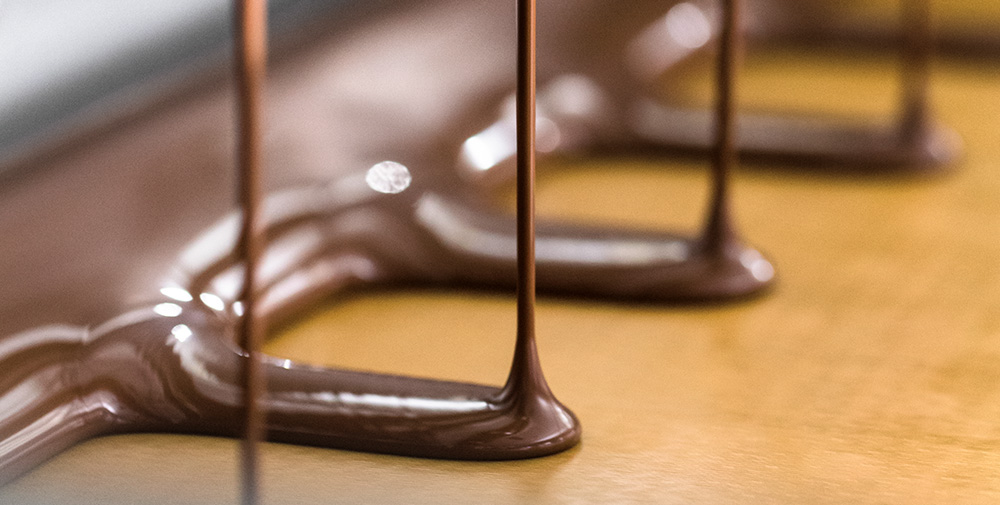Material topics
- Water management
- Resource use and circular economy
Water and waste
Water management
We assess our water withdrawal rates twice a year in all our production facilities globally and are working to continuously optimize our processes and systems in order to reduce municipal water withdrawal. This includes fixing leaks, finding alternative sources, recycling and improving our data reading. Where needed, we install equipment to improve our measurement of water withdrawal. Decisions on capital projects and investments, such as installing new production lines, are required to incorporate estimated water usage and impacts.
Compared to the 2019 baseline, the volume of municipal water withdrawn in our production processes per ton of chocolate produced was down 8%. Our absolute municipal water withdrawal increased compared to 2022. The main reason for this was drier and hotter weather.
Municipal water withdrawal
Water withdrawal per metric ton of chocolate produced (2019 = 100%)
Overall, our impact from wastewater on water ecosystems is currently estimated to be low. We aim to gain further insights into potential local risks and opportunities with the development and execution of an integrated water roadmap by 2025.
Reduce and recycle
With respect to water scarcity, our producing operations do not have a material impact on water availability. This is because only a very small part of our production takes place in water-stressed areas. Nevertheless, we aim to further limit our impact by implementing measures to reduce wastewater generation.
All actions implemented are identified, designed and tracked locally. Their effectiveness is also assessed locally.
Beyond our operating activities
We expect our suppliers to adhere to Lindt & Sprüngli’s Supplier Code of Conduct, which outlines requirements for water stewardship. We additionally consider water stewardship in the selection of responsible sourcing standards for relevant raw materials. For example, the Bonsucro standard for sugar cane requires producers to have water stewardship plans, and to consider water risk and water rights of local communities. Through the Lindt & Sprüngli Farming Program, we also finance the development, improvement, and/or maintenance of water infrastructure in our cocoa bean origin countries to facilitate access to water.

Loss of semi-finished products
In our production processes, we transform cocoa beans and ingredients step by step into chocolate products. The output of each step is the input into the next. We refer to the product before it reaches the final step as a semi-finished product. Our chocolate mass is a semi-finished product as it represents the output of the chocolate manufacturing process step and the input for the molding process. Chocolate mass waste is weighed to show inefficiencies in the production process and to facilitate identification of measures for improvement. There are other operational processes, such as cleaning, where it is more difficult to identify the exact amount of waste loss.
In 2023, we conducted an internal semi-finished product waste audit and updated our methodology to more comprehensively and consistently measure waste relative to our inputs and outputs. This led to newly published data for 2022 to 2023 which shows a decline in our performance. The increase of semi-finished product waste over the last years can be explained by improved data measurement and the expansion of our product range, innovations and trials including products containing allergens, zero sugar, no dairy, etc. The need to ensure food safety when producing new recipes and product ranges results in an increase of semi-finished product waste. This waste trend is expected to continue. Since we could not trace data back to 2015 under the new methodology, we are retiring our previous target and will work to develop a new one. To be able to set a clear and impactful target for the future, we need to understand and analyze the data and situation in more detail. Over the next few years, we will conduct a comprehensive review of our waste strategy, taking into account the new material topic “Resource use and circular economy”.
